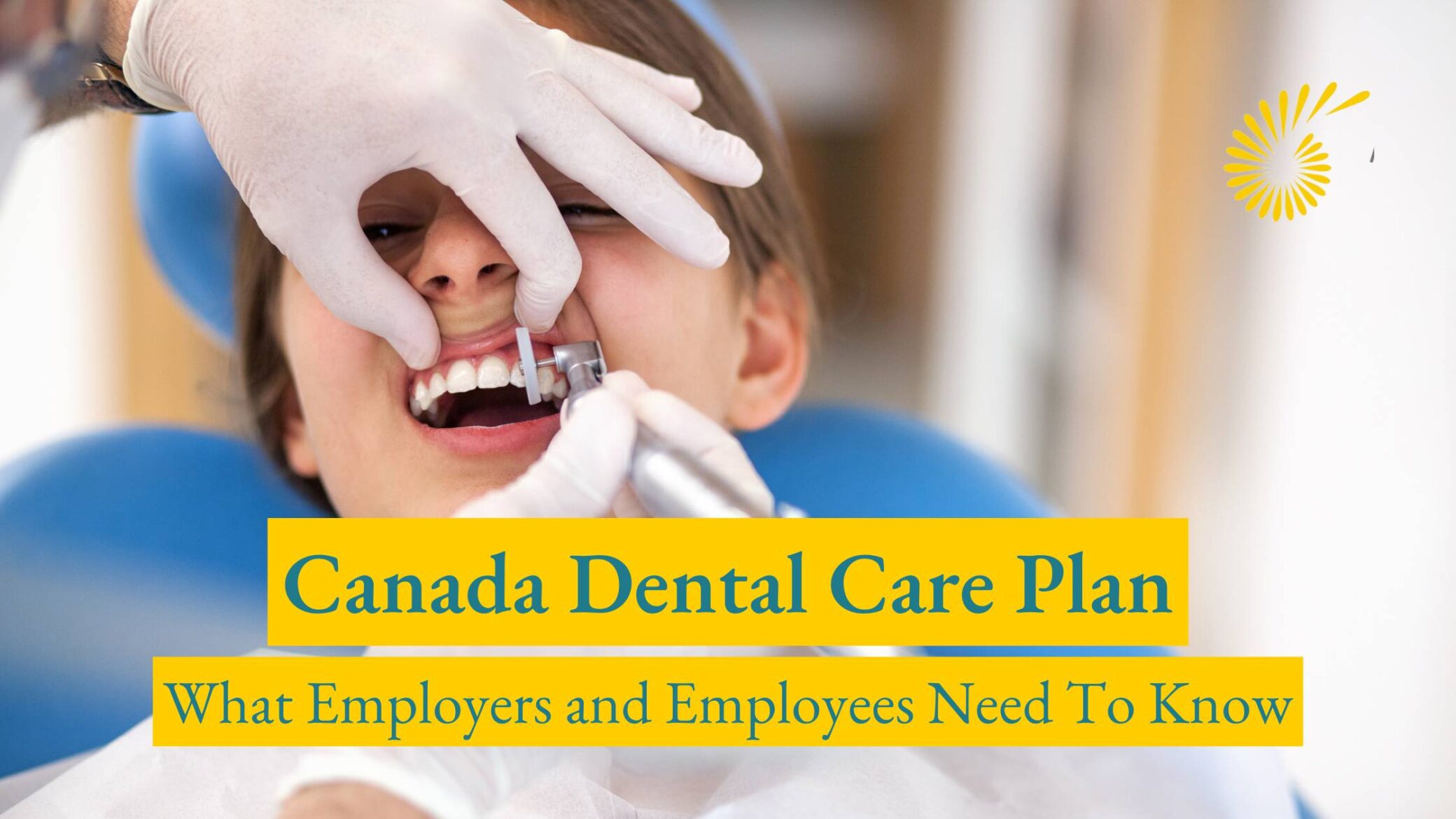Canada Dental Care Plan: Guide for Employees and Employers
Health Canada introduced the Canada Dental Care Plan (CDCP) on December 11, 2023, to offer dental coverage to eligible Canadian residents. This initiative provides financial aid for a variety of dental services, targeting individuals and families who meet specific criteria.
The government is releasing eligibility for the Canada Dental Benefit in stages, starting with seniors, then people claiming the Disability Tax Credit, the employees with children under 18-years old, then, in 2025, the remainder of eligible Canadians. The focus of this post is to provide information to employees with young children, and their employers about the CDCP.
The CDCP is designed to provide financial assistance for children’s dental care, targeting families with children under the age of 12 and a yearly household income below $90,000, and for certain seniors age 65 or older, and people who claim the Disability Tax Credit. To qualify, parents must confirm that their children did not have access to a private dental plan. Children covered by private insurance plans, such as those provided through employee benefits, are ineligible for the Canada Dental Benefit.
What Employers Need to Know?
Beginning in 2023, the Canada Revenue Agency (CRA) is asking for help from employers in administering the Canada Dental Benefit by disclosing details regarding dental coverage offered to their employees. When submitting the 2023 T4, employers are obligated to specify if the employee or any of their family members were eligible for dental insurance or coverage for dental services as of December 31, 2023. Similar criteria are applicable to payers responsible for issuing T4A slips.
In order to facilitate the administration of this initiative, the CRA will seek information from employers regarding the dental coverage extended to their employees, commencing with the 2023 calendar year. This data will confirm the eligibility of applicants to the Dental Care Benefit.
T4 Reporting of the Canada Dental Benefit
When completing the 2023 T4 form, employers are required to specify whether the employee or any family members were eligible for dental insurance or any form of dental services coverage as of December 31, 2023. This reporting obligation extends to both T4 and T4A slips.
It’s important to note that this reporting focuses on the level of coverage available to the employee, rather than their family situation or the specific coverage they enrolled in. Employers must provide this information in the newly designated Box 45, indicating the category of coverage accessible to the employee.
The categories include:
| CODES | LEVEL OF ACCESS |
| 1 | Not eligible to access any dental care insurance or coverage of dental services of any kind. |
| 2 | Payee only |
| 3 | Payee, spouse, and dependent children |
| 4 | Payee and their spouse |
| 5 | Payee and their dependent children |
For the 2023 tax year, employers have been granted relief from completing Box 45 if Code 1 applies to the employee, indicating they had no access to any coverage, provided that the employer has diligently met all other reporting obligations. This relief applies solely to employers who have made reasonable efforts to fulfill their reporting duties. Employers who submit T4 slips for the 2023 calendar year before January 1, 2024 (such as for terminated employees or certain owner manager remuneration strategies), are not required to amend their slips to reflect the code after this date.
T4A Reporting of the Canada Dental Benefit
Similar requirements also extend to payers mandated to issue T4A slips, which document various income sources like self-employed commissions, pensions, and annuities.
For individuals with reported amounts in Box 16 (pertaining to pension or superannuation payments), payers must additionally complete the new Box 15. This box is designated to specify whether the recipient or their family members had access to dental services plans or coverage, with categories mirroring those used in T4 reporting. If there’s no amount to report in Box 16, filling out Box 15 becomes optional.
GET IN TOUCHWhat Employees Need to Know?
Who is eligible for the Canada Dental Care Plan?
Eligibility for the CDCP requires individuals and their spouses or common-law partners to have:
- An adjusted family net income (AFNI) below $90,000
- Be Canadian residents for tax purposes.
- File their tax returns annually.
- And not have dental insurance through their employer, pension, or group plan.
Children under 18 are also eligible based on their parents’ or guardians’ qualifications.
What are the benefits of the Canada Dental Care Plan?
The CDCP covers a range of services provided by oral health providers such as dentists, denturists, dental hygienists, and dental specialists. Patients are responsible for a co-payment, determined by their AFNI. While no co-payment is required for AFNI under $70,000, it increases to 40% for AFNI between $70,000 and $79,999, and 60% for AFNI between $80,000 and $89,999.
Which healthcare professionals have the authorization to offer services included in the Canada Dental Care Plan?
Oral health providers are encouraged to enroll in the CDCP to avoid additional charges for patients. Enrolled providers bill the plan directly, simplifying the payment process for patients.
When will the Canada Dental Care Plan take effect?
The CDCP rollout will occur in phases, starting with seniors in December 2023, followed by access to covered services in May 2024. Individuals with a disability tax credit certificate or those under 18 can apply from June 2024, while other eligible residents can apply in 2025.
How to enroll in the Canada Dental Care Plan?
Eligible individuals will be automatically enrolled once determined, with Service Canada sharing their information with Sun Life, the contracted service provider. Upon enrollment, individuals will receive a member card and notification of their coverage start date.
Would you like help understanding the Canada Dental Care Plan, contact us today!
GET STARTED
